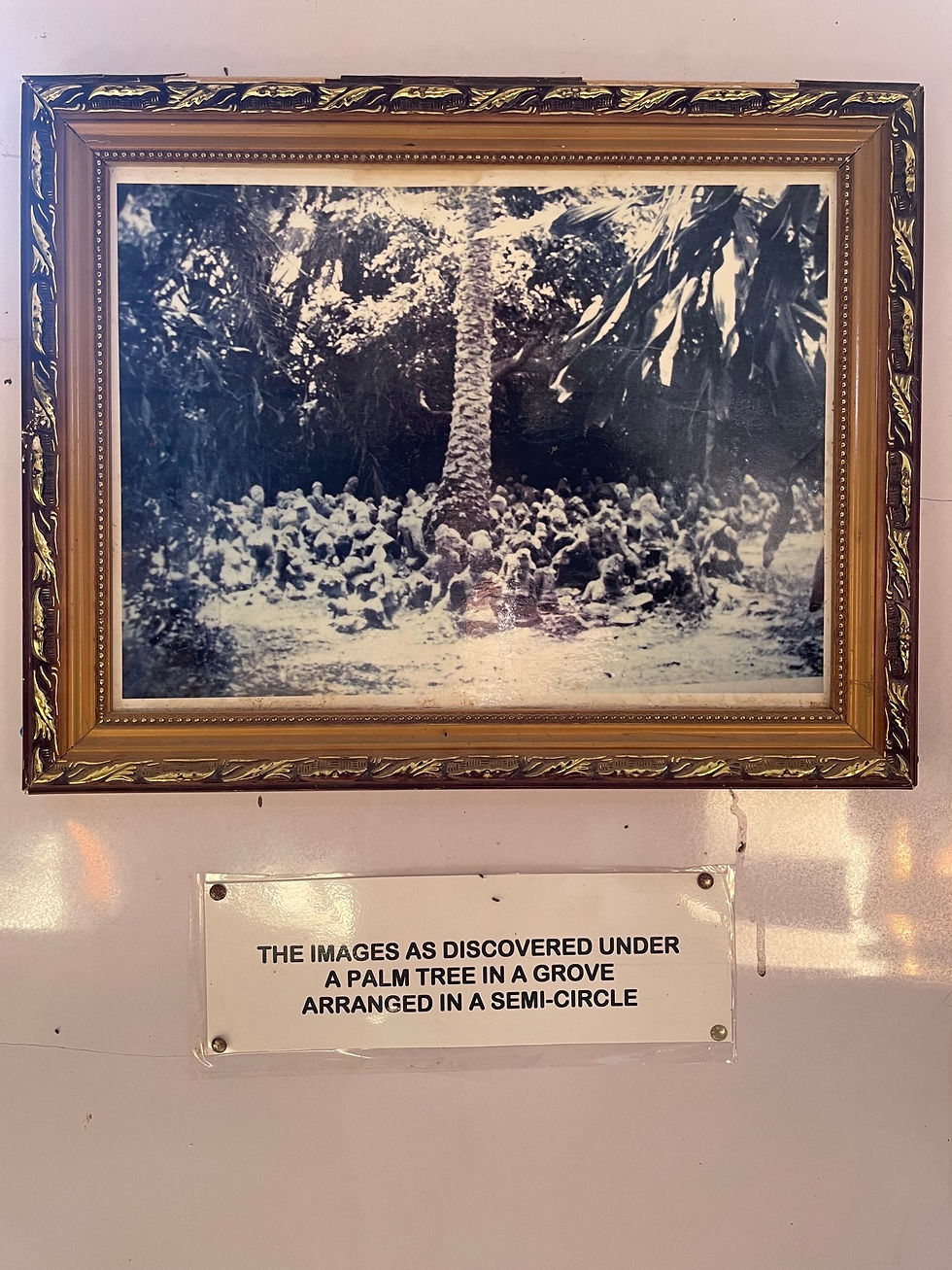Visiting the Soapstone Images: Treasures of the Esie museum, Kwara State
- foluoyefeso
- Feb 6, 2024
- 3 min read
Kwara State is really a treasure trove of history, and I find myself blown away every time I visit. I was in Offa for a beautiful wedding, and afterwards, I made sure to visit the country's first official house of art - the Esie museum. It was established in 1945 but it houses relics from a time that predates even the present people of Esie town (who settled here circa 300 years ago), and these were what I really came for.
Amongst the collection of relics, there is an interesting group of statues known as the Soapstone images, numbering over a thousand pieces. They were discovered in 1775 by a Prince named Baragbon during a water-finding expedition and there they sat in a semi circle in the shade of a palm tree. Bewildered by the sight, Baragbon rushed to the palace to report it and quickly brought the Elesie of Esie (king) to the location. The sheer scale of the find amazing to all who bore witness.

Some say the statues number around 800, other sources say they number up to 1500, I believe these skewed reports are a result of plundering over over the centuries. The Elesie of Esie left the site in a hurry and when Ifa was consulted, they learned that the statues possess supernatural powers and were people who could turn themselves into stone. So as not to incur their wrath, the people celebrate them yearly (Ayeye Odun Baragbon in April), thanking them for blessings the previous year and praying for more in the time to come.
It is interesting to note that while the Elesie made his quick exit from the site, he tripped and fell, a bad omen in African culture, and as a result, no ruling Elesie has visits the museum. The current Elesie is however quite involved in the development of the museum and its relics.

The images are carved from a type of metamorphic rock called steatite which has a high talc composition, so it is a softer rock and easy to carve. Studies point to a localized source of the material, as Esie town is located on a 1200km stretch of rock called the 'Schist belt'. Images carved from this material are otherwise durable but in places where the material is thin, breakages have occurred. Many of the soapstone images have broken legs and necks as a result.
The soapstone images are fantastic works of art in themselves, ranging from 14cm to 104cm tall and depicting noble men and women as well as the lower class. The two largest ones being the King (held in the outdoor courtyard) and the queen (depicted below) indicate a social hierarchy and leave clues about a complex civilization.

Many of the statues wield farming and hunting tools, while some hold musical instruments. Some possess facial tribal marks and a lot of detail is in the depiction of their hair which is gorgeous and thick, possessing its own character and uniqueness.

Western archeologists have taken interest in the statues over the decades, as their origins are a mystery to many across the globe. In their approach, limited to the science of things, it has been established that the images were never actual people, but works made by an unknown carver.
Though this is obvious, the soapstone images are personifications of an early people and act as vessels to embody their spirit. Perhaps when it was revealed that they used to be people, that message was metaphorical. Over millennia, humans have preserved their imagery/culture/spirit through art and the soapstone images are no different. They provide vital clues about the lives of the people who once tread the land. The fall of the old Oyo empire brought a considerable amount of displacement, and these are important pieces of the puzzle.

I quite enjoyed my visit to the Esie Museum. The location is beautiful, largely unchanged since the days of Baragbon. The original mud walls are preserved for an authentic ambience and experience, with which I was very pleased. Entry into the museum costs ₦300, an amazing bargain for a priceless experience.
Don't forget to like and share this with someone who might appreciate it!
Comentários